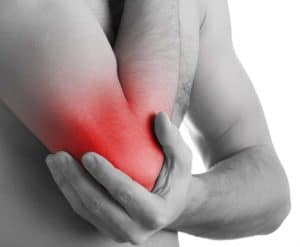You all probably know that feeling, when you want to spend a beautiful summer day outside doing a sport you love but you can’t because your body said no. Your frustration can get even bigger when you get diagnosed with ”tennis elbow.” But you do not even play tennis!
According to the statistics, tennis elbow affects 1% to 3% of the population overall and as many as 50% of tennis players during their careers. Less than 5% of all tennis elbow diagnoses are related to actually playing tennis. It is generally agreed upon that one of the main causes or risk factors is repetitive motions of the wrist, fingers and elbow – whether from tennis, golf, baseball, computer use, gardening or leisure activities. This leads to inflammation, pain and tenderness on the outside of the elbow.
How to reduce pain and inflammation with Tennis Elbow?
The most important part of the treatment is rest. Positive news is that due to long rest from aggravating activity allows the small tears in tendon to heal on its own. No single treatment has been shown to be totally effective. However if you want to participate in actually helping your body, here is a combination of the treatments that are known to resolve tennis elbow over time.
Resting and icing the elbow are important to allow the tissue to heal. Applying ice for 20 – 30 minutes can reduce pain and inflammation, particularly in the early days when the elbow is acutely painful. Ice can also be applied after performing rehabilitation exercises.
Using an elbow strap to protect the injured tendon
Stretching and Exercising are important and provide the important element of a rehabilitation program. Exercises should be done as soon as pain allows and continued after full fitness has been achieved.
Can I Promote Healing of Tennis Elbow?
Rolfing Structural Integration can be beneficial modality in fastening the healing process. As a Certified Rolfer I specialize in restoring fascia movement, breaking up scar tissue and releasing tension in muscles and tendons. The key in my session is to get free and supported movement from not only affected muscles causing pain in lateral elbow, but also from more distant muscles and joints that can help to support elbow. The method for breaking up scar tissue in this case involves active movement with a light resistance where I enhance eccentric contraction.
I believe that the success I have had with clients suffering with tennis elbow pain was thanks to combining the soft tissue manipulation and active eccentric contraction movements. Those can help to unwind the strain patterns residing in body.
